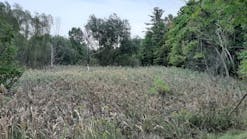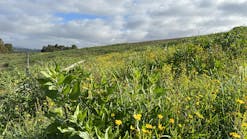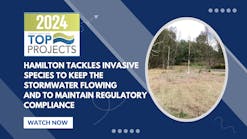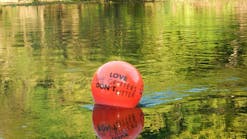Some things we learn best in calm and some in storm, as the saying goes, and while the person who coined the phrase probably wasn’t thinking about surface water quality at the time, the adage certainly applies. Spurred on by the regulatory alphabet soup – NPDES, TMDL, SWPPP, SWTR – managing stormwater in the US has become big business.
The field shares much with erosion and sediment control: common tools, common strategies, common headaches. For example, one of the measures NPDES permittees must meet under the Phase II stormwater rules is “controlling construction-site runoff,” and for that, stormwater managers can take a well-thumbed page from the erosion control industry. Acknowledging the close connection between the two fields, the CPESC program now includes a stormwater specialization, and while ESC professionals are learning more about stormwater, stormwater managers are finding they also need to learn more about what we do.
The Sediment Connection
Dry-weather and wet-weather testing of stormwater runoff-the calm and the storm-are standard protocol for measuring a host of nonpoint-source pollutants, such as fecal coliform and other pathogens that stormwater managers must track. And yet, in the entire spectrum of nonpoint-source pollutants, the cause of most surface-water impairment is still, hands down, sediment.
Under Section 303(d) of the Clean Water Act, each state must compile a list of water bodies that don’t meet the water-quality criteria for their designated uses. States then must develop total maximum daily loads, or TMDLs, for each impaired lake, river, estuary, and stream. (For more on TMDLs see “Meeting the TMDL” in our September/October 1999 issue and “Stormwater Control and the TMDL Program” in the March/April issue of Stormwater magazine.) Right now the estimated count totals 40,000 TMDLs that need to be developed nationwide for various pollutants and conditions: pesticides, pathogens, pH, excessive temperature, mercury and other metals, and increased nutrient levels. But of all these, it was sediment that ranked as the number-one cause of impairment on the 1998 303(d) lists.
The Sky Is Falling
Calm and storm have a further significance for ESC professionals and stormwater managers alike. We tend to think of nonpoint-source pollutants as being conveyed primarily by water-stormwater runoff, agricultural irrigation. Recently, those whose unenviable task it is to develop TMDLs have started looking skyward toward another, less obvious pollutant source: atmospheric deposition. “Wet” atmospheric deposition is what happens when rain washes airborne pollutants into the watershed. The “dry” variety occurs when airborne contaminants including cadmium, mercury, and other trace metals settle on surface waters or on the ground, where they can be washed into surface waters with the next storm.
The National Atmospheric Deposition Program operates monitoring stations across the US and publishes maps showing pollutant concentrations and trends. Predictably, pollutant deposition varies in different parts of the country: manufacturing centers tend to have higher nitrate concentrations, agricultural areas have higher concentrations of ammonium. The correlations are not exact, though; airborne pollutants can travel great distances, and pinpointing the source of what’s coming to earth in your watershed is a daunting task. Equally difficult is determining what percentage of any given pollutant comes from atmospheric deposition as opposed to, say, contaminated runoff.
What does all this mean to the ESC professional? It pays to be aware of the other avenues by which nonpoint-source pollutants might be entering the watershed. Some contaminants that tend to attach to sediment particles-and whose control therefore appears to be an ESC responsibility-are coming from other directions as well. Understanding the entire picture is vital when it comes to overall efforts to improve surface water quality. In those efforts, stormwater managers, TMDL developers, erosion control specialists, and air-quality control managers are all in it together to reach a common and mutually beneficial goal.
Janice Kaspersen
Janice Kaspersen is the former editor of Erosion Control and Stormwater magazines.






